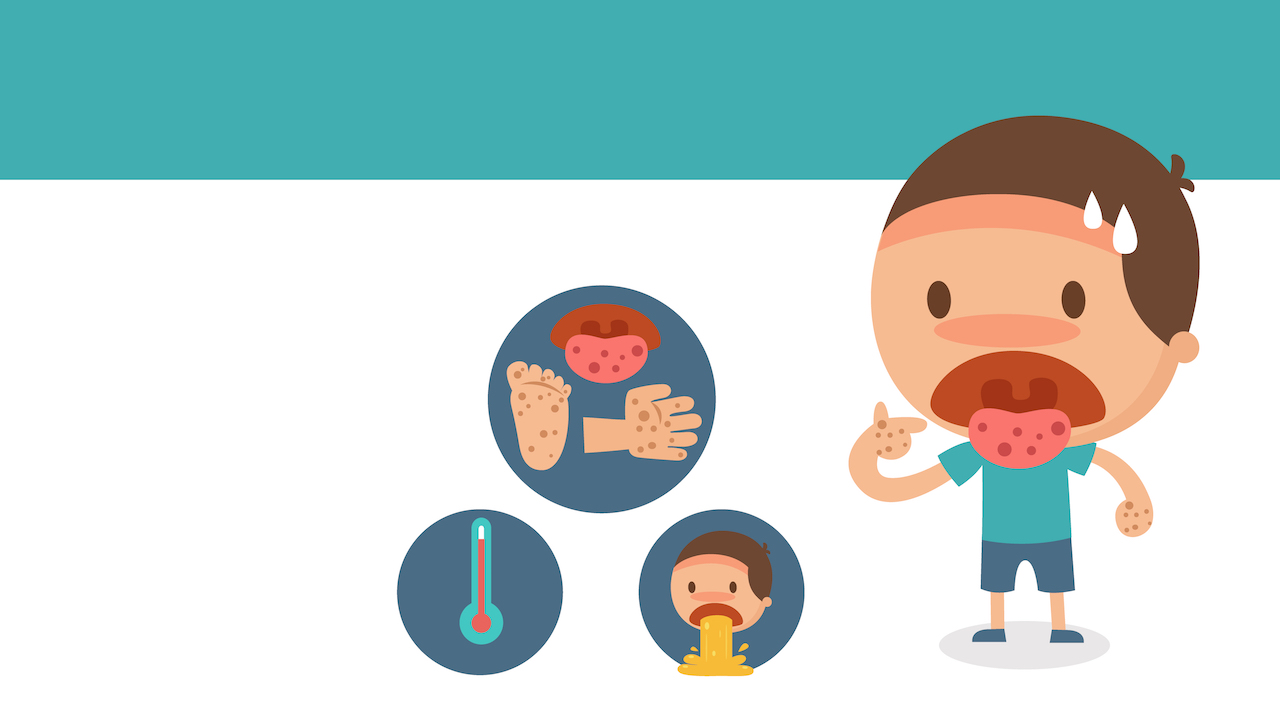Hand, Foot and Mouth Disease (HFMD) is a common contagious, viral illness that often affects infants and children, although it’s possible for older children and adults to contract it too. Don’t confuse HFMD with that similar-sounding disease that affects animals though!
What causes HFMD?
HFMD is a viral infection that’s brought on by the Coxsackie A16 virus. Although a different, related virus called Enterovirus 71 can also cause HFMD, it’s highly unlikely that there are other strains of viruses that will cause the same symptoms.
The virus is highly contagious and can spread directly via saliva drops or bodily fluids, or unwashed hands and surfaces contaminated with the virus.
Symptoms
HFMD may cause some of these symptoms, or all of them. These include:
- Fever.
- Sore throat.
- Painful sores on the hands and feet and inside the mouth.
- A loss of appetite.
- A general feeling of irritability and not being well.
- A blistering, red rash on the soles of the feet, the palms of the hands and sometimes the buttock cheeks.
Am I at risk?
HFMD is more common among infants and toddlers younger than 10 and more often, those younger than five, especially in day-care and preschools. This is because the virus is more likely to spread through nappy changes and children putting their hands and feet in their mouths. Older children and adults can also contract HFMD.
How do I treat HFMD?
There’s no specific treatment for HFMD. The symptoms are treated separately to give relief and comfort, and usually clear up after two to seven days. The blisters and sores can last a bit longer. The symptoms often just run their course.
It’s recommended to treat the fever and sore throat by giving your child paracetamol and plenty of water to prevent dehydration.
Avoid acidic foods and drinks as these can be painful on the lesions in your child’s mouth. Ice cubes and fruity ice lollies can relieve those painful sores. Let the blisters on the skin dry out naturally. Monitor the blisters and sores regularly to avoid them getting infected.
How do I protect my family against HFMD?
There’s no immunisation or vaccination against HFMD. The best you can do is to avoid the disease from spreading.
- Wash your hands frequently with warm water and soap, especially after changing nappies.
- Don’t touch your eyes, mouth and mouth with unwashed hands.
- Avoid close contact like hugging, kissing and sharing surfaces and utensils with someone who has HFMD.
- If you or your child has HFMD, stay home from school or work until the symptoms clear up to avoid contaminating others.
- Make sure your child’s day-care or preschool knows immediately, as other children might have been contaminated with the virus too.
- Disinfect commonly shared areas like the bathroom and kitchen regularly.
- Disinfect toys, blankets, bottle teats or dummies that might be infected with the virus.
- Management at your child’s day-care or preschool should inform the parents when there is a case of HFMD.
Resources:
- https://www.cdc.gov/features/handfootmouthdisease/index.html
- https://www.healthline.com/health/hand-foot-mouth-disease#outlook7
- http://www.parent24.com/Health/common_ailments/Hand-Foot-Mouth-Disease-20150826
- https://www.mayoclinic.org/diseases-conditions/hand-foot-and-mouth-disease/symptoms-causes/syc-20353035

